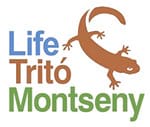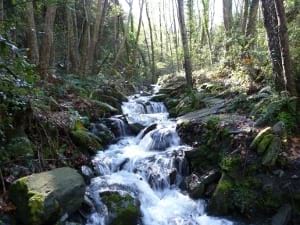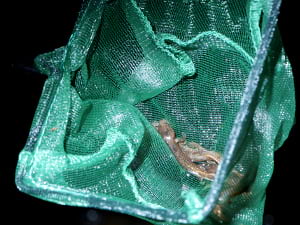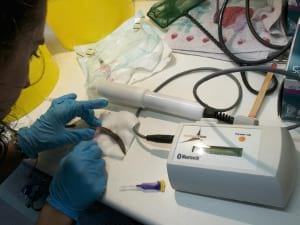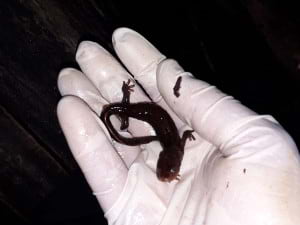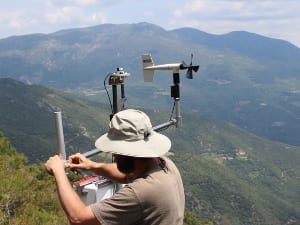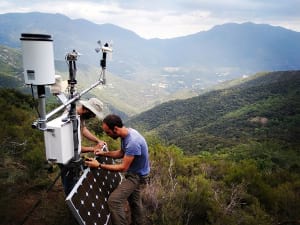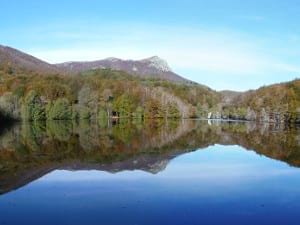Slider 1
Life Tritó Montseny
Un símbol de la natura del Montseny
Subbanner
LIFE15 NAT/ES/000757
Project of conservation of an only species to the world
Breadcrumb
Monitoring Actions
Progress of Actions D:
D. Monitoring the impact project actions
D.1 Monitoring of conservation actions: technical follow-up of actions for sustainable and responsible water use and habitat improvements
Operational objective 2. Increase the hydrological quality of streams and their ecological flow in their distribution area
Operational objective 3. Eliminate or minimize threats to the riverside habitat that currently occupies the area
During the execution of the actions programmed to improve water use and riverbank habitat, a weekly or daily monitoring will be carried out, depending on the type of action, by technicians from the Montseny NP-RB to direct the works and confirm that they follow the executive project and that they are carried out correctly.
Once the works have been completed, a follow-up will be carried out to check their correct operation and to propose corrective measures in the event that any operating problem is detected or their effectiveness can be improved.
Photo: XPN Archive.
D.2. Monitoring of the Montseny newt stocks: natural and reintroduced
Operational objective 5. Periodically know the state of conservation of the Montseny newt and expand scientific and technical knowledge for its conservation and management
The aim is to assess whether actions to eliminate negative impacts on habitats have been effective. This means that these impacts have been adequately neutralized or mitigated, having restored environmental conditions that have led to an improvement in the condition of the populations of Montseny newt in the affected areas.
Photo: Daniel Guinart.
D.3. Monitoring of Montseny newt populations: monitoring of infectious diseases in amphibians in the Montseny PN-RB
Operational objective 5. Periodically know the state of conservation of the Montseny newt and expand scientific and technical knowledge for its conservation and management
The aim of this action is to check the health status of wild amphibian populations to ensure the absence of certain infectious diseases that could cause the extinction of the Montseny newt. The main species studied will be the Montseny newt (Calotriton arnoldi), although some samples of amphibians that share their habitat are taken, such as the salamander (Salamandra salamandra) and common toad (Bufo bufo).
The samples taken will be used for the early detection of infectious agents: Batrachochytrium dendrobatidis, Batrachochytrium salamandrivorans and Ranavirus. In the event that any mortality episode of any amphibian species were detected, the N. P. -RB Montseny, a specific study would be carried out to determine the cause and/or pathogenic agent causing it.
Photo: Fèlix Amat.
D.4. Monitoring of Montseny newt populations: sampling of infectious diseases prior to the release of Montseny newt specimens
Operational objective 5. Periodically know the state of conservation of the Montseny newt and expand scientific and technical knowledge for its conservation and management
The aim of the action is to ensure that the animals reared in the breeding centres of Torreferrussa, Pont de Suert and the Barcelona Zoo, which have to be released to the PN-RB Montseny, are free from the main infectious agents: Batrachochytrium dendrobatidis, Batrachochytrium salamandrivorans and Ranavirus.
Photo: XPN Archive.
D.5. Monitoring of environmental variables and impact of actions: qualitative and quantitative hydrological monitoring
Operational objective 5. Periodically know the state of conservation of the Montseny newt and expand scientific and technical knowledge for its conservation and management
The purpose is to have a series of qualitative and quantitative hydrological data, in a regular and standardized way, creating a network of LTER (Long Term Ecological Research) stations to obtain periodic data on the volume of water flowing through the streams of the Montseny newt distribution area, the groundwater level of the upper Tordera river basin, as well as to have data on physicochemical variables of the water in these streams. This hydrological monitoring network will be maintained once Life project is completed, to consolidate it as a LTER station, which will be extended to the entire PN-RB Montseny area.
Photo: Joan Comellas.
D.6. Monitoring of environmental variables and impact of actions: monioring of the biological impact of interventions in coastal habitats
Operational objective 5. Periodically know the state of conservation of the Montseny newt and expand scientific and technical knowledge for its conservation and management
Assess the biological impact of the interventions carried out in riparian and reophilic environments of the Montseny newt distribution area, establishing LTER (Long Term Ecological Research) stations; abiotics and biotics will be obtained.
- Abiotic data: Meteorological data (temperature, rainfall, relative humidity, solar radiation) in a periodic and standardized manner, in reophilic environments and their riparian habitat.
- Biotic data: different variables to obtain biological indices: the IPS index of diatomaceous algae, the IBMWPC index of macro invertebrate communities, the IBICAT index of fish community, the QBR and IHF index of riparian vegetation, as well as amphibian indices.
Photo: Joan Comellas.
D.7. Monitoring of environmental variables and impact of actions: socio-economic impact of the Life Triton Montseny project
Operational objective 6. Involve and engage the territory's stakeholders in the conservation of riverbank habitats, their biodiversity and in particular the Montseny newt
The aim of the action is to assess the economic and social impact of the project at the level of the municipalities in the GNP-MWR. Although the main objective of Life Triton Montseny is to benefit an amphibian species, the actions envisaged are likely to have a direct and indirect impact on residents and users of the Montseny GNP-RB.
It is very interesting to assess these repercussions, both economic and social, in order to know the positive or negative impact of improving the conservation status of an amphibian and its habitat. The incidence of actions, such as the promotion of sustainable and responsible use of water, will certainly have some direct effect on the residents of the area under intervention, and an objective assessment is essential to incorporate civil society into future biodiversity conservation projects.
Photo: XPN Archive.
